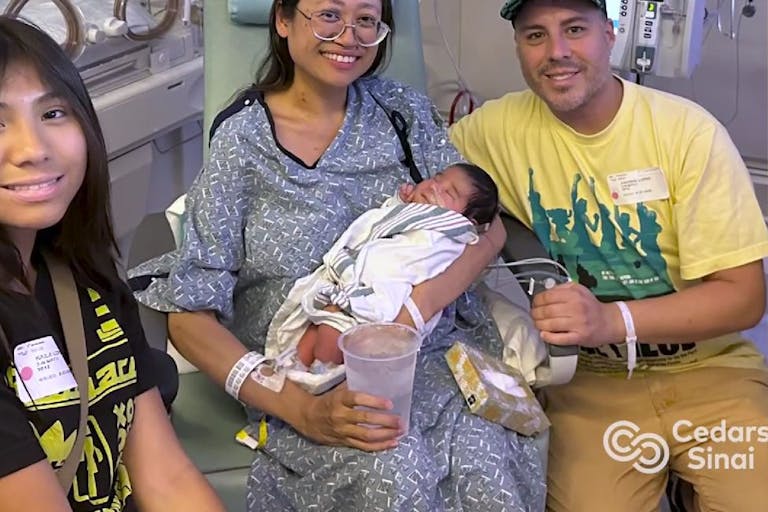
Full term 'miracle' baby born after 'unprecedented' ectopic pregnancy
Bridget Sielicki
·
Four common things experienced by abortion industry workers
Over the years, a number of abortion workers have left the abortion industry and come forward with their stories. These testimonies reveal many things about what goes on in abortion facilities, and have some common themes. Former abortion worker Dina Madsen spoke at a conference sponsored by the Pro-Life Action League, called “Abortion: The Inside Story.” First, Madsen talked about how she viewed abortion before going to work at the facility:
I had a couple friends in high school who had had abortions, and I had a pregnancy scare myself when I was an adolescent, that was the first thing that came to my mind. I never thought about having the baby. I just took it as the general consensus, as the general population does, that it is a choice…
So Madsen had no objection to abortion when she first took the job. She was hired at the facility even though she had no medical training or background. The only quality the facility looked for was that a new employee was supportive of abortion.
READ: Post-abortive clinic worker sees abortion aftermath: ‘It was gruesome’
Many abortion workers notice common themes among the industry, as noted below.
Common theme #1: Witnessing the high number of post-abortive women working in the abortion industry
Many workers at Madsen’s facility had undergone abortions themselves – some, Madsen says, had many, even eight or nine of them. Madsen is not the only former worker to talk about the high number of post-abortive women in the industry. Former Planned Parenthood director Abby Johnson has stated that 70 percent of workers at Planned Parenthood are post-abortive.
Former abortion worker Jewels Green was suffering from guilt and grief over her own abortion, which she was coerced into, when she took a job at an abortion facility. She wanted to help other women have a better experience than she had. She thought that if she could counsel them, they could come to a better understanding of whether or not they wanted an abortion. That way, they would not be coerced into abortions the way she had been. Green explains:
I was coerced into having an abortion and thought that by becoming a counselor at an abortion clinic, I could help others like me really talk out their feelings on the issue, truly explore their options, and help them make an honest, informed decision–or help them leave an abusive situation.
Another possible motive behind post-abortive women’s desire to work in abortion facilities is the need to surround themselves with other people who support and promote abortion in order to validate their own abortions and repress any feelings of guilt or grief.
In an interview, former abortion worker Catherine Adair spoke about post-abortive abortion workers. She was asked, “Do you think some of, if not most, of abortion advocacy is rooted in a personal experience with abortion that is just not faced?”
She responded, “Absolutely. I think there’s a tremendous amount of pain behind those clinic doors, both for the women going in there and for the women working there.”
Common theme #2: Witnessing a lack of respect for the value of human lives in the abortion industry
Dina Madsen says in her testimony that the general consensus among the workers at her facility was that the abortionists there were not good doctors:
[T]hey [the abortion workers] wouldn’t let any of these guys touch them with a 10-foot pole. Never. And yet every day they told these other women, “They’re wonderful doctors; they won’t hurt you. They’re the best at what they do. He’s really a nice man.” And sometimes the women would ask, “Have you ever had an abortion?” And of course they wouldn’t say, “Yes, but not by him.”
Obviously, these workers were not looking out for women. They had a coarsened attitude towards the women and did not have a great deal of respect for them. Madsen says:
Article continues below
Dear Reader,
Have you ever wanted to share the miracle of human development with little ones? Live Action is proud to present the "Baby Olivia" board book, which presents the content of Live Action's "Baby Olivia" fetal development video in a fun, new format. It's perfect for helping little minds understand the complex and beautiful process of human development in the womb.
Receive our brand new Baby Olivia board book when you give a one-time gift of $30 or more (or begin a new monthly gift of $15 or more).
I have to admit, though, I didn’t really have much sympathy for them [the women]. In my view, well, you got yourself into this position, tough it out.
She says that at the time, she did not value her own life or the lives of others:
So I was looking at these babies as something to be disposed of. I didn’t see them as important. I didn’t see life as important. I didn’t value my own life, therefore how can I value anyone else’s life? And if these women were stupid enough to get pregnant, then it was their fault. And that’s how I felt. And that was how the majority of the staff felt.
Common theme #3: Seeing aborted baby body parts at abortion facilities
In summing up her time at the clinic, Madsen talks about deceiving women and identifying fetal parts:
My official title at the mill was “health worker.” I did various duties — lab work, leading groups (deceiving women about their abortions), “advocating” (deceiving women during their abortions), and assisting the abortionist, which included helping during the abortion and checking to make sure all the parts of the baby were there in the collection jar afterwards. I will never forget, in the second-trimester abortions, holding those little feet up to a chart on the wall to make sure of the age of the baby.
READ: Former abortion worker: Every woman just ‘a line item on our budget sheet’
As Madsen said before, she had no medical training, yet she did lab work. And like many other former abortion workers, Madsen is haunted by memories of handling the body parts of aborted babies. Other former workers have written about this as well. Abby Johnson wrote about workers having nightmares based on seeing the bodies of aborted children:
Inside every abortion clinic across the country, someone is tasked to be the POC technician. Their job is to take everything suctioned out of the uterus during an abortion and reassemble the parts of the baby. We did this to ensure that the uterus was empty of all fetal parts. If something was left, it could create a potentially fatal infection for the woman….
You may say, “I can’t imagine.” No, I assure you that you can’t. You can’t imagine something so gruesome unless you have actually done it.
You may say, “I bet they have nightmares.” Yes, “they” do. Nightmares especially come after you leave the industry.
Common theme #4: Witnessing or participating in the mistreatment and deception of abortion patients
Madsen’s comments about deceiving women visiting these facilities is also a common theme in the stories of former abortion workers. Catherine Adair has spoken about lying to women about fetal development:
We never discussed fetal development. The baby was referred to as the “contents of the uterus” or a “clump of cells.” On the rare occasion a woman asked about the size of the baby, I would tell her it was about the size of the tip of my pencil, regardless of how many weeks into her pregnancy she was.
There are many testimonies from women about being lied to at abortion facilities.
Madsen also discusses women who came in for repeat abortions:
And every time she’d come in for an abortion or a D&E, we’d stamp, stamp, stamp, stamp – some of these charts were filled in on both sides. And the doctor would take a look at them and say, “Gee, if she tries real hard she can come in again before Christmas.” And this is somebody who cares about women? I don’t think so.

The abortionist’s contempt for women who have multiple abortions is not unusual. Abortionists, who see the bodies of aborted babies daily, know what is at stake in the abortion debate. They sometimes feel angry at women who seem to take it lightly and come in again and again. Many of the workers and abortionists have negative feelings towards these women. For example, one abortionist said:
I have one kid here, seventeen, who’s just had her 3rd abortion… I want to beat the sh*t out of her. I want to put her through the damn wall. “What’s the matter with you?” I say to her. Every time she thinks a relationship is going on the rocks, she gets pregnant. Then she has an abortion and starts up a new relationship. She swears every time she has an abortion that she won’t screw again. I tell her screwing isn’t the problem, protection is.
In an article in the New York Times Magazine, an abortionist said:
For some it is definitely a kind of birth control…. These women are on their sixth one. They have a troubled family situation, and you feel it’s in the best interest for the possible future child…. In some ways I do feel that — but it doesn’t make it any more pleasant.
In the same article, another abortionist also commented on women who have repeat abortions: “Some days you just want to shake these people. ‘Why didn’t you take your birth-control pills? Why didn’t you get your Depo-Provera shot?’”
In many ways, Dina Madsen’s experiences in the abortion industry mirror those of other of former abortion workers. The deception of women, the distress of seeing aborted baby body parts, and the contempt for those having repeat abortions are common themes in former workers’ testimonies.
Live Action News is pro-life news and commentary from a pro-life perspective.
Contact editor@liveaction.org for questions, corrections, or if you are seeking permission to reprint any Live Action News content.
Guest Articles: To submit a guest article to Live Action News, email editor@liveaction.org with an attached Word document of 800-1000 words. Please also attach any photos relevant to your submission if applicable. If your submission is accepted for publication, you will be notified within three weeks. Guest articles are not compensated (see our Open License Agreement). Thank you for your interest in Live Action News!

Bridget Sielicki
·
Issues
Nancy Flanders
·
Politics
Bridget Sielicki
·
Issues
Sheena Rodriguez
·
Guest Column
Right to Life UK
·
Issues
Bridget Sielicki
·
Guest Column
Sarah Terzo
·
Abortion Pill
Sarah Terzo
·
Guest Column
Sarah Terzo
·
Guest Column
Sarah Terzo
·
Guest Column
Sarah Terzo
·